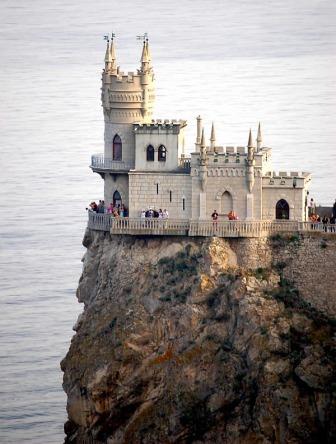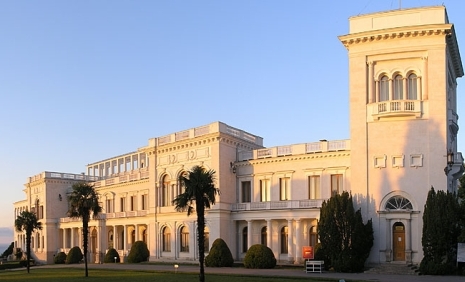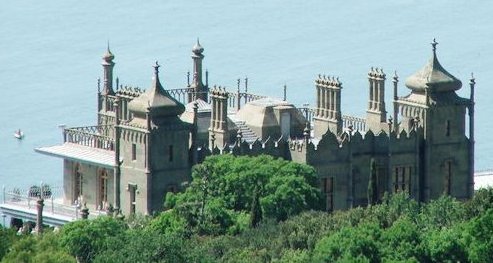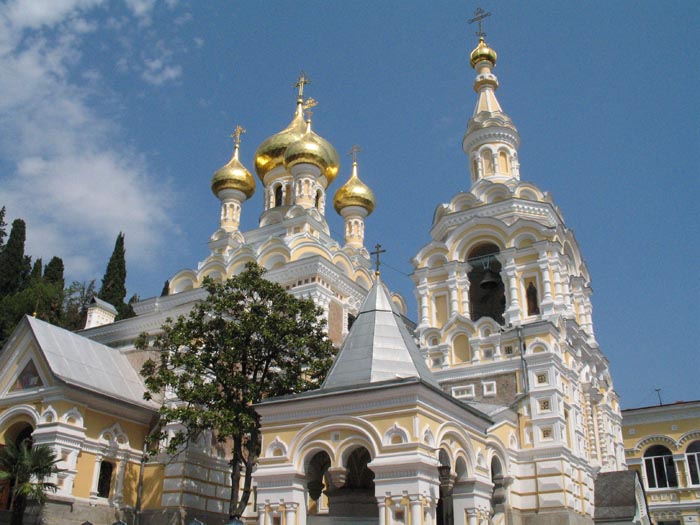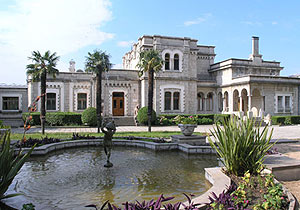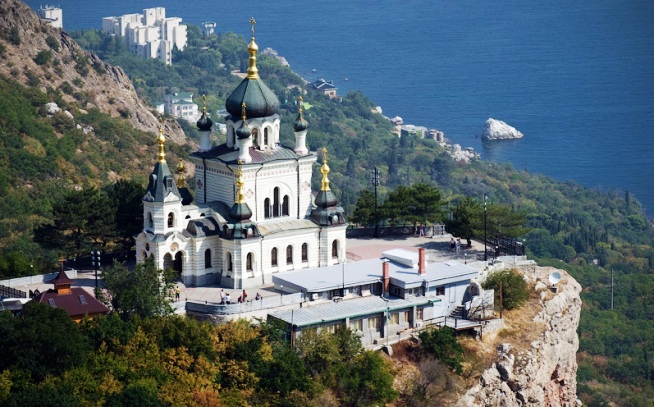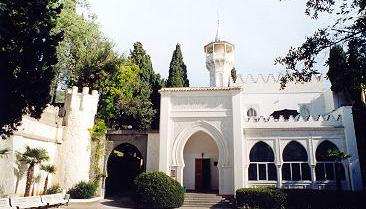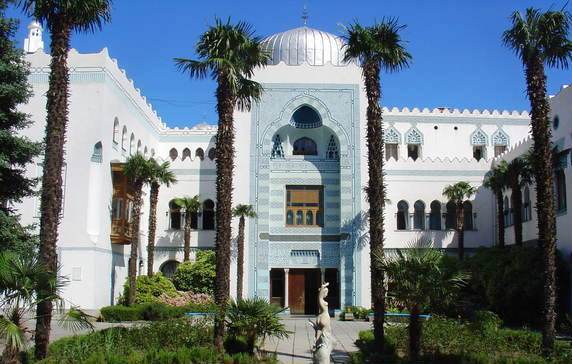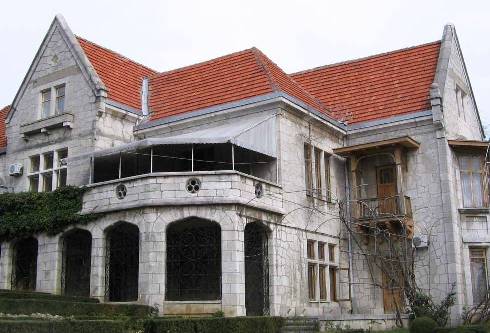Teplyk [Teplik]
Some people call Teplyk region «Heaven on Earth» for its picturesque landscapes with clear and deep sky, diamonds of night stars, playful flames of summer thunderstorms, emerald valleys, and hyaline springs. Teplyk area also boasts its original folk traditions and habits. Each village of Trostyanets Kray (Area) is a folk masterpiece that features its own historic chronicle having been continuously created by generations of local inhabitants.
The region is situated in South-Eastern part of Vinnitsia Region in a forest-steppe zone of Ukraine. It borders Gaysyn [Gaisyn], Bershad, and Trostianets administrative units (regions) of Vinnytsia Oblast and Chrystynivka Region of neighboring Cherkassy Oblast.
The territory of the region has been inhabited by humans from early ancient times that is quite obvious taking into account friendly weather conditions and advantageous geographic disposition of the area.
The signs of human presence found in the area are considered to be attributive to the most remote period in human history — the Paleolithic age. The remains of Trypillya culture have been fount unharmed here. The agnate Slavic ancestors of Teplyk inhabitants have been considered Ulychi tribes that lived along the banks of Pivdennyi Bug River in VII-X centuries AD.
Historic sources evidence that the settlement was founded as a fortified border post belonging to Lithuanian Principality. First written reference of Teplyk could be attributed to XV century AD.
Great Duke of Lithuania, Polish King Alexander, vested ownership over the settlement into the wealthy family of Kishka. This event has evidenced the fact of existence of the inhabited settlement there in late XV century. Later on the right of ownership was confirmed by Kazimir Yagellon, Sigizmund, and other noble Personalities that reined the territory.
In 1862 the ownership of Teplyk was granted to Olexandra Pototska (Sasha Village was named after her). In 1867 p. the Rome Catholic Church of Saint Virgin, that is now the tourist place of attraction of XIX century, was built on account of congregation and O. Pototska.
Teplyk Land time and again hosted Cossak troops headed by Bogdan Khmelnitskiy at times of Liberation War of Ukrainian People (1648-1654). Territorially Teplyk was considered the subdivision of Uman Cossak Regiment. In May 1652 the Cossack Army passed through the settlement joined by many local inhabitants. A little bit later the Army engaged in well known Batog [Batig] Battle which outcome was total defeat of Polish troops. Many historians and researchers, numerous Polish, Russian, and clerical sources have explained the name Teplyk as the one originated from the name of small local river or spring — Teplyk, Teplychka.
Once upon a time Teplyk had another name — Smilgorod (Brave Town). People have guessed this name was a tribute to extraordinary bravery and stoutness of local inhabitants that stubbornly defended their town from numerous enemies and invaders.
In the middle of XVII century Teplyk had already had an urban status. In XVII-XIX centuries it considered important trade-and-craftwork center.
At times of Bolshevik revolution (1917) and Civil war the Land of Teplyk was by turns occupied by Austrian and German troops, Petliura Directoria units, Volynets squads, Polish regiments, and Bolshevik First Red Army cavalry troops.
On very beginning of Great Patriotic War (World War II) more than 600 local residents marched to the front as volunteers. On 26 July 1941 Teplyk was taken by Nazi troops. Occupation lasted long. It was tragic page in the history of the Land. Barbaric massacre happened just nearby Sobolivka where Nazi shot down many local inhabitants. In the premises of Teplyk school fascists set up a torture room where a lot of town residents and dwellers from outskirts found their cruel death.
Skarzhenivka Village is considered here the cradle of underground resistance and glorious partisan movement at Teplyk Land.
During the last 20 years development of the town was marked by construction of a trade center, semi-products factory, and meat-processing and non-alcoholic beverage shops. The backbone of local industry consists of 2 sugar-works, milk-processing plant, cannery, and bakery /cereal plant.
Teplyk region nowadays boasts well developed grain and sugar-beet production, stock raising, and processing facilities.
The most valuable asset of generous Teplyk Land is its talented personalities. This land is firmly tied up with such distinguished characters as the musician Mykola Leontovich, and the writer Sholom-Aleihem. This blessed Land inspired artistic creativity of Petr Gutsal, Tetyana Yakovenko, Oleg Senchik, Galina Tarasyuk, and Mykola Buryak.
Small village Sobolivka is famous for one more extraordinary personality, well-known Podil [Podolia, Podillia] folklorist Eugenia Davydovna Tondiy.
Grateful countrymen have six times gathered annual regional folk festival «Dusha bez pisni — shcho bezkryla ptytsya» (Songless Soul is a Wingless Bird) devoted to cherished memory of Evgeniya Davydovna.
One more folk band «Yavorina» came to life at local children music school in fall 1989.
And more, locals pass throughout the generations a legend about Bogdaniv natural spring with curing and tasty fresh water. People say that Hetman of Ukraine Bogdan Khmelnitsky enjoyed the water from the spring. He loved the water so much that he ordered Cossacks to clean up the source and build a blockhouse over it. Great Bogdan blessed the spring with his own hand. And this water is still healing people. Its water is still preserved clear and crystal as it was in that glorious old ages.
Local people cherish and preserve their old traditions and habits. The Tomashpil Land boasts its well developed embroidery, macrame, lacemaking, woodcarving, and honeycraft.
Everyone in Sobolivka knows enamored beemaster Dmytro Mykolaiovych Skakodub respectfully and witty nicknamed «Mitya Bzholo-Med»(Dmytro Bee-Honey), or «Mitya Pasechnik» (Dmytro-Bcekeeper).
On the outskirts of Rozkoshivka Village nearby the pond and broad meadow one can see one more beegarden owned by local agricultural partnership founded and headed by well known in the region beemaster Taras Eedorovich Skaletsky. He believes that beemaster has to odor bees and to know everything about them for honey to be tasty and salutary. Otherwise rich and abundant honey «crops» will be only dreamt.
Another folk artist, well known in the region, is Anatoliy Kostyantynovich I )cin yanyshyn. 1 le creates unrepeatable masterpieces paintings encrusted with seeds of wheal, millet, and poppy.
The name of Teplyk inhabitant Volodymyr Ivanovich Obidnick, the woodcarver, is well known even in America and Europe. He is the member of American North-Western Association of Woodcarvers. He has chosen the wooden material because, to his belief, there is a soul in any timber, and this soul is clearly perceived by a master when he takes a piece of wood to his hands. Supporting material is peas, redwood, beech, ash, and Indian blackwood. The holy of holies to the Master was the Icon of Saint Pokrovy. This masterpiece incrusted with silver and gold in walnut frame bought the collector from Canada. Each item created by him is delivering profound idea, philosophy of human genesis, and inner light.
The Museum of Mykola Leontovich and his tomb in Markivka Village are considered a «Mecca» of tourist attraction in Teplyk Region. The museum was open in 1977 and timed with the jubilee of M.D. Leontovich. Its architectural project and memorial bronze bust were shaped by Lviv artist Yaroslav Ulgursky.
Having once got to this glorious historic area, steeped in blessed sacral spirit, and saturated with peace, calm and sounds of church bells, you will definitely see the unique ancient churches of wooden design. One of them is magnificent Saint Michail Church (built in 1807) in Velyka Mochulka Village.
The real decoration of Karabelivka Village is a fantastic Church of Pokrova rearranged in 1794 from Greek Catholics to Orthodox one. Originally the Church of Pokrova was neat and small, looking as traditional residential country house, crowned with tiny cupola. But later on the settlers decided to erect new three-cupola wooden one on stone foundation with separate bell-tower.
The place that local inhabitants are still proud as of the local sacred place in Zaluzhzhya Village is an Orthodox Church built within 1895-1897 to the honor of Svyatyi Mykola Chudotvorets (St. Nicholas the Wonderworker) on the account of Sir Kamensky and local community. As an old willow on the road to the village that evidenced a lot and survived even more, the past of the Church have been threaded black and black. It was shut down, its saint icons were ripped up from the walls, and its crosses were dropped down. Nevertheless the locals have kept the Church unscathed. Today it is a real decoration and spiritual hideaway for Zaluzhzhya dwellers.
In Strazhgorod, according to reminiscences of local old-timers, the village church was erected in 1708 to the honor of Rizdva Presvyatoi Bogoroditsi (the Nativity of the Most Holy Mother of God). In 1848 it was refurbished and cross-shaped. No nails were used for construction of the Church. It served people about 300 years. Cossacks of Strazhgorod sotnya (Hundreed, military unit) of Uman Polk (military command) consecrated their weapons before military campaigns against oppressors. After sanctification of newly built Church in 1903 the old one was kept closed for five continuous years and then dismantled, and not a rotten part was discovered.
Fanciers of sacral architecture will be attracted with a Church of Uspinnya Presvyatoi Bogorodytsi (Dormition of the Theotokos) built in 1887 (Kivachivka Village); Saint Mykola [Nicholas] (1889-1890, Petrashivka Village), Saint Mykhailo [Michael] (1785, Skazhenivka Village).
There are also other places of attraction: Rome Catholic Church of Divy Mariyi (The Holy Virgin) built in 1867 (Teplyk, 9 Nezalezhnost St.); old distilling plant built in 1894 (Bdzhilna Village, Radyanska St.); building of technical college, the Hero of the Soviet Union, Mykola Oleksiyovich Vorontsov graduated from; Memorial Room of M.O. Vorontsov in Teplyk, Vorontsova St.; watermill built in 1850 in Pologi Village.
Significant historic and cultural value of Teplyk Region, essential in terms of tourist attraction, represents the Stanislav Pototsky Palace (1899) situated in Udich Village.
Each village of this colorful land has its own unique biography full of inexhaustible labor and struggle for independence and liberty. One may easily «read» this endless story having got to the museums of local history, memorial rooms of ethnography and folk art stuffed with vivid and unforgettable exhibits. You will hear many breathtaking narrations and legends associated with historic events that have taken place here from local long-livers.
Enjoyable summer rest on the banks of Pivdennyi Bug River is also awaiting you in Zavadivka Village. Vacant rooms of folk style are available for rent in local private houses.
This Land of Labor and Songs will fain host fanciers of folk music, pastoral rural landscapes, historic and sacral architecture, and everyone keen on traveling and those that thirst for new impressions.
Tourist Vinnychyna. Ethnography Guide. Comp. of ukrainian text O. Kizian

